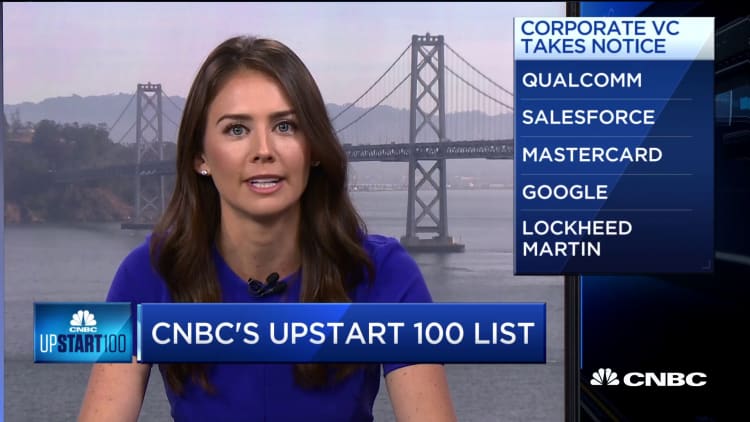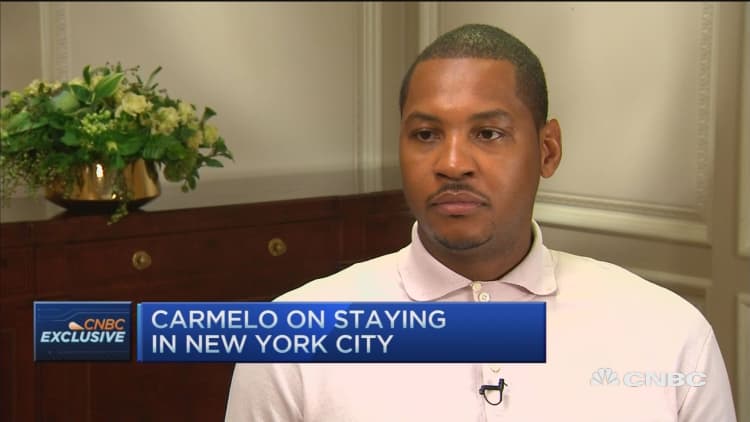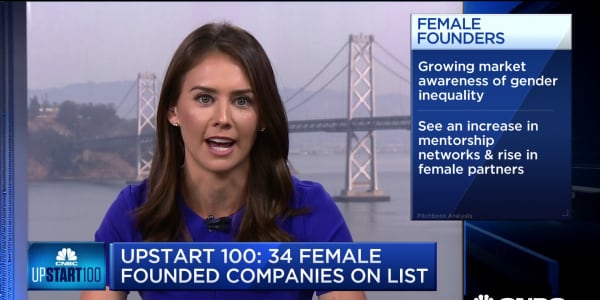Generations of sports fans always have been obsessed with the oohs and aahs of the game — the one-handed catch for a touchdown, the three-point buzzer beater, the deft dribbling and goal kick, the walk-off grand slam. They're endlessly looped on TV's sports highlights shows, the boo-yah stage for ogling superstars and up-and-comers.
But now Gen Z has arrived and is flipping the channel. Move over, SportsCenter, Overtime is making a major play to win over the 24-and-under crowd, who watch sports-action videos on YouTube, Instagram and other social media platforms where the all-digital cord-cutters hang out.
Three-year-old Overtime is backed by $35 million in funding from NBA luminaries such as Kevin Durant and Carmelo Anthony, former NBA commissioner David Stern and VC heavyweights including Spark Capital, Andreessen Horowitz and Sapphire Ventures — and is generating millions of views among Gen Zers.
"We are trying to change the world of sports," said co-founder and CEO Dan Porter, formerly WME's head of digital, sitting alongside president and fellow founder Zack Weiner, an ex-chess champion turned entrepreneur, at the start-up's offices in Brooklyn's gentrified Dumbo neighborhood. The start-up — which made the 2019 CNBC Upstart 100 list — has roughly 100 employees between Brooklyn and its recently opened office in Los Angeles.

More from Upstart 100:
Amazon has triggered an arms race in this technology
This start-up aims to break internet monopolies and deliver 5G broadband for $49 a month
Ahead of the 2020 presidential election, this start-up is using military-grade AI to stamp out fake news
This revolution centers around a nontraditional sports media strategy. Instead of ponying up big bucks to professional leagues and athletes and college conferences for rights to air live games and highlight videos — broadcast and cable TV's hardwired model — Overtime contracts with nearly 2,000 smartphone-toting, nominally paid stringers who travel mostly to high schools across the country and nearly a dozen foreign countries to film games and workouts starring Gen Z athletes, many hoping the exposure will garner them college scholarships and pro contracts.
The law, which passed in California in September allowing college athletes in that state to hire agents and sign paid-endorsement deals, could spread nationwide. The NCAA's top governing board voted in late October to allow student athletes to be compensated, potentially creating another fertile playground for Overtime.
"If we are able to compensate college athletes, it would be a very positive thing, both for them and us," Porter said.
The NCAA's three divisions must still craft their own rules and detail the specifics.
Overtime's raw footage is edited into short-form videos, often accompanied by hip music and graphics, then uploaded to Gen Z's favorite social media platforms — Instagram, YouTube, TikTok, Snapchat, Twitter, Facebook and Twitch. In early October, Overtime reported that its general audience has quintupled in size over the past year, and on Instagram, viewership has doubled in the last eight months. Its videos are now viewed more than 920 million times a month on average, Overtime claimed, up from 145 million monthly views in January 2018.
"The genesis of this company was the understanding that these kids born after 1995 were not watching hours of live sports," Porter, 53, said, noting ratings declines for the Super Bowl and other premier events. "They want the people, the stories and the voice, meaning the way we capture content, the way we film, the way we edit — everything around these athletes."
While eschewing the traditional networks' sports audiences and their consumption habits, Overtime's approach shares some inherent similarities. The viewers are predominantly male, but between ages 17 and 24. "We program like a network, with a range of shows," Porter said, referring to its more than 25 different series, each with 10- to 20-minute episodes, built around four core sports: football, gaming, soccer and football.
Besides the catchall Overtime channel, separate ones feature individual sports — like the one on Instagram exclusively for women's basketball — plus international channels for Canadian, French and Indian audiences.
We are trying to change the world of sports.Dan Porterco-founder and CEO of Overtime
Overtime primarily focuses on emerging amateurs, though they've figured out how to include celebrated pros, too, without paying them. For example, the "KD Film School" series features investor Durant sitting with high school hoops stars and critiquing their game films. This fall it's launching "Primetime 2.0," a reality series starring NFL Hall of Famer Deion "PrimeTime" Sanders and his high school quarterback son, Shedeur Sanders, considered a can't-miss class of 2021 college recruit and future pro.
Porter declined to report company revenues, other than to say that Overtime has seen a robust annual growth of "probably six to eight times what it was last year." Earnings come from advertising, sales of Overtime apparel and sponsorship deals with brands including McDonald's, Converse and Gatorade.
Overtime has discontinued previous deals to televise its videos on two NBC regional sports networks (RSNs), determining that Gen Z wasn't watching those channels. "We're all about putting our content where our audience is," Porter said, "and if they're not tuning into a RSN, there's not a lot of value in being there."
The company also has decided to bypass the premium subscription option, recognizing that Gen Z has grown up with free media. "It makes more sense to go with the flow of their consumption patterns than to take a more traditional business model and drop it on top of them," Porter stated.
Gen Z-centric media
Although Overtime enjoys some first-mover advantage, it's not alone in satiating Gen Zers' sports appetite. Competitors including Bleacher Report's House of Highlights, Whistle, Mars Reel and Wave are vying for young eyeballs, too. "They've all tried to carve out unique selling propositions, with their own distinctions and differentiations," said Steve Bradbury, an adjunct professor with Syracuse University's S. I. Newhouse School of Public Communications and a sports media entrepreneur.
He likened Overtime's branding strategy to that of the commercial networks' "must-see TV" campaigns in the 1990s to popularize prime-time programming blocks. "Overtime has the opportunity to brand itself under an umbrella, creating connectivity between its shows and series," Bradbury said.
Yet just as the networks battled for must-see supremacy, so will Overtime join a growing crowd on Gen Z-centric media outlets, including the social platforms themselves. "Twitter, Instagram, Facebook, they're all doing bigger, broader, longer deals with sports properties," said Eric Fisher, U.S. editor for London-based research firm SportsBusiness. "But if Overtime has a particular voice and brand in the market, that will be a key element in standing out among the competition."
Come April, the competition may include Disney's ESPN with the launch of Quibi, the short-form video platform backed by entertainment mogul Jeffrey Katzenberg. Quibi, too, will live on social media, and the sports behemoth will be among several contributors aiming to reach Gen Z there. ESPN has focused on pro and college sports, but this could be a path forward in remaining relevant among its legacy audience's kids.

There's a needle to thread, as well, in this burgeoning business of mass-glorification of teen athletes. Critics question, for instance, whether there will be too much preening for the cameras, to the distraction of the team concept. "Promotional videos of high school athletes, such as those on Overtime, are not appropriate within the model of education-based athletics," said Bruce Howard, director of publications and communications at the National Federation of State High School Associations, the national leadership organization for high school sports and performing arts. "The self-promotion of an individual player over the team runs counter to the philosophy that has made high school sports successful for many years."
Nonetheless, the endless desire for oohs and aahs among sports fans of all ages is especially prominent in today's cult of celebrity influencers. Gen Z offers a willing and technologically enabled audience, and Overtime wants to be their sports media provider. There's even talk internally of establishing some type of league of its own, as ESPN did by creating the X Games.
"It's something we're considering," Porter admitted, "but it's still hypothetical. We have an amazing brand and community that there's a lot of things we can do with, but right now we're focused on creating the biggest sports network in the world."






